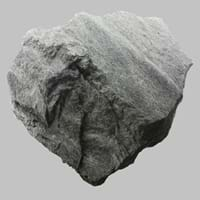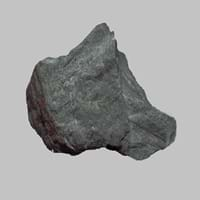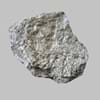Definition
Phyllite is a fine-grained metamorphic rock with a well-developed laminar structure, and is intermediate between slate and schist rocks
Taconite is a low-grade iron ore which belongs to sedimentary rock and containing about 27% iron and 51% silica
Origin
Unknown
Western Australia, Minnesota
Discoverer
Unknown
Newton Horace Winchell
Etymology
From Greek phullon leaf + -ite1
From the name of Taconic Mountains in New England
Class
Metamorphic Rocks
Sedimentary Rocks
Sub-Class
Durable Rock, Soft Rock
Durable Rock, Medium Hardness Rock
Group
Not Applicable
Not Applicable
Other Categories
Coarse Grained Rock, Fine Grained Rock, Medium Grained Rock, Opaque Rock
Coarse Grained Rock, Opaque Rock
Texture
Phyllitic Sheen, Slaty
Banded, Trellis
Color
Black to Grey, Light Greenish Grey
Red, Reddish Brown
Durability
Durable
Durable
Appearance
Crinkled or Wavy
Layered, Banded, Veined and Shiny
Interior Uses
Decorative Aggregates, Floor Tiles, Homes, Interior Decoration
Decorative Aggregates, Entryways, Flooring, Homes, Interior Decoration
Exterior Uses
As Building Stone, As Facing Stone, Garden Decoration
As Building Stone, Garden Decoration, Paving Stone
Other Architectural Uses
Curbing
Curbing
Construction Industry
As Dimension Stone, Building houses or walls, Cement Manufacture, Construction Aggregate, for Road Aggregate, Raw material for the manufacture of mortar, Roadstone
As Dimension Stone, Used for flooring, stair treads, borders and window sills.
Medical Industry
Not Yet Used
Not Yet Used
Antiquity Uses
Artifacts, Sculpture
Artifacts
Commercial Uses
Cemetery Markers, Commemorative Tablets, Creating Artwork, Writing Slates
As a touchstone, Cemetery Markers, Creating Artwork
Types
Not Available
Not Available
Features
Easily splits into thin plates, Is one of the oldest rock, Surfaces are often shiny
Is one of the oldest rock
Archaeological Significance
Monuments
Not Yet Used
Used
Famous Monuments
Not Applicable
Data Not Available
Famous Sculptures
Data Not Available
Data Not Available
Pictographs
Used
Not Used
Petroglyphs
Used
Not Used
Formation
Phyllite is a metamorphic rock which is formed by regional metamorphism of argillaceous sediments since their cleavage arose due to deviatoric stress.
Taconite is a type of sedimentary rock formed when a river carries or transports pieces of broken rock as it flows. When the river reaches a lake or sea, its load of transported rocks settles or deposits at the bottom of sea or lake.
Mineral Content
Albite, Alusite, Amphibole, Apatite, Biotite, Chlorite, Epidote, Feldspar, Garnet, Graphite, Hornblade, Kyanite, Micas, Muscovite or Illite, Porphyroblasts, Quartz, Sillimanite, Staurolite, Talc, Zircon
Hematite, Magnetite, Quartz
Compound Content
CaO, Carbon Dioxide, MgO
Fe, Iron(III) Oxide, Silicon Dioxide
Types of Metamorphism
Not Applicable
Not Applicable
Types of Weathering
Biological Weathering, Chemical Weathering, Mechanical Weathering
Biological Weathering, Mechanical Weathering
Types of Erosion
Chemical Erosion, Coastal Erosion, Glacier Erosion, Water Erosion, Wind Erosion
Chemical Erosion, Coastal Erosion, Glacier Erosion, Water Erosion, Wind Erosion
Grain Size
Medium to Fine Coarse Grained
Large and Coarse Grained
Fracture
Conchoidal
Uneven, Splintery or Conchoidal
Porosity
Highly Porous
Highly Porous
Cleavage
Crenulation and Pervasive
Imperfect
Specific Gravity
2.72-2.73
5-5.3
Transparency
Opaque
Translucent to Opaque
Density
2.18-3.3 g/cm3
Not Available
Specific Heat Capacity
Not Available
Resistance
Heat Resistant, Pressure Resistant, Water Resistant
Heat Resistant, Impact Resistant, Pressure Resistant, Wear Resistant
Deposits in Eastern Continents
Asia
Afghanistan, Bangladesh, Bhutan, China, India, Japan, Kazakhstan, Malaysia, Pakistan, Russia, Thailand, Turkey, Vietnam
China, India, Iran, Iraq, Oman, Russia, Saudi Arabia, Taiwan, Thailand, Vietnam
Africa
Egypt, Ethiopia, Morocco, Nigeria, South Africa
Kenya, Morocco, South Africa, Tanzania
Europe
Austria, England, France, Georgia, Germany, Italy, Liechtenstein, Monaco, Norway, Slovenia, Spain, Sweden, Switzerland
Austria, France, Greece, Italy, Malta, Poland, Portugal, Serbia, Spain, Sweden, United Kingdom
Others
Not Yet Found
Greenland, Mid-Atlantic Ridge
Deposits in Western Continents
North America
Canada, Costa Rica, Cuba, Mexico, Panama, USA
Canada, Mexico, USA
South America
Brazil, Colombia, Guyana
Bolivia, Brazil
Deposits in Oceania Continent
Australia
New South Wales, New Zealand, Queensland
New South Wales, Queensland, South Australia, Western Australia
Phyllite vs Taconite Characteristics
Though some rocks look identical, they have certain characteristics which distinguish them from others. Characteristics of rocks include texture, appearance, color, fracture, streak, hardness etc. Phyllite vs Taconite characteristics assist us to distinguish and recognize rocks. Also you can check about Properties of Phyllite and Properties of Taconite. Learn more about Phyllite vs Taconite in the next section. The interior uses of Phyllite include Decorative aggregates, Floor tiles, Homes and Interior decoration whereas the interior uses of Taconite include Decorative aggregates, Entryways, Flooring, Homes and Interior decoration. Due to some exceptional properties of Phyllite and Taconite, they have various applications in construction industry. The uses of Phyllite in construction industry include As dimension stone, Building houses or walls, Cement manufacture, Construction aggregate, For road aggregate, Raw material for the manufacture of mortar, Roadstone and that of Taconite include As dimension stone, Used for flooring, stair treads, borders and window sills..
More about Phyllite and Taconite
Here you can know more about Phyllite and Taconite. The life cycle of a rock consists of formation of rock, composition of rock and transformation of rock. The composition of Phyllite and Taconite consists of mineral content and compound content. The mineral content of Phyllite includes Albite, Alusite, Amphibole, Apatite, Biotite, Chlorite, Epidote, Feldspar, Garnet, Graphite, Hornblade, Kyanite, Micas, Muscovite or Illite, Porphyroblasts, Quartz, Sillimanite, Staurolite, Talc, Zircon and mineral content of Taconite includes Hematite, Magnetite, Quartz. You can also check out the list of all Metamorphic Rocks. When we have to compare Phyllite vs Taconite, the texture, color and appearance plays an important role in determining the type of rock. Phyllite is available in black to grey, light greenish grey colors whereas, Taconite is available in red, reddish brown colors. Appearance of Phyllite is Crinkled or Wavy and that of Taconite is Layered, Banded, Veined and Shiny. Properties of rock is another aspect for Phyllite vs Taconite. The hardness of Phyllite is 1-2 and that of Taconite is 5.5-6. The types of Phyllite are Not Available whereas types of Taconite are Not Available. Streak of rock is the color of powder produced when it is dragged across an unweathered surface. The streak of Phyllite and Taconite is white. The specific heat capacity of Phyllite is Not Available and that of Taconite is 3.20 kJ/Kg K. Depending on the properties like hardness, toughness, specific heat capacity, porosity etc., rocks are resistant to heat, wear, impact, etc.Phyllite is heat resistant, pressure resistant, water resistant whereas Taconite is heat resistant, impact resistant, pressure resistant, wear resistant.





